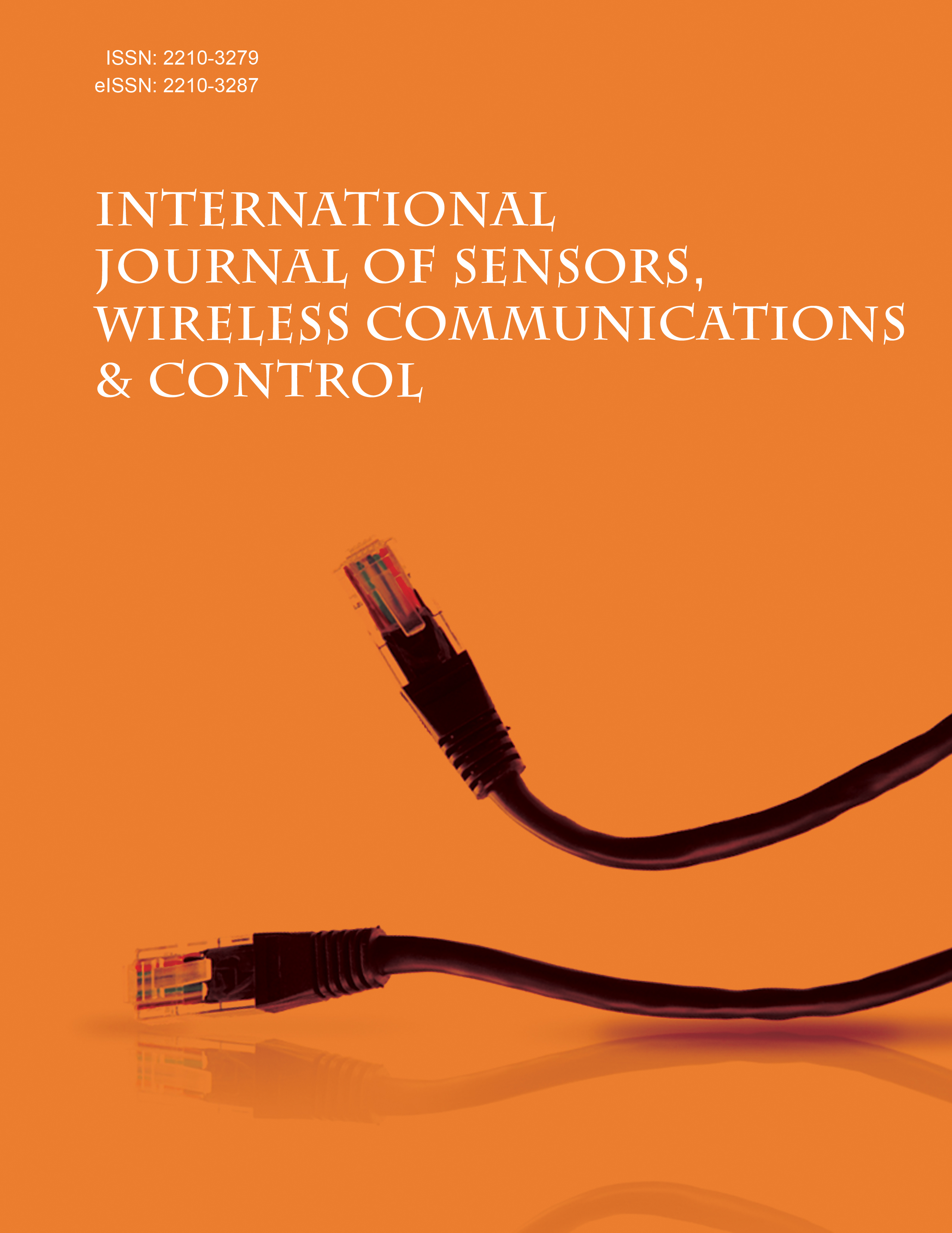- Home
- A-Z Publications
- International Journal of Sensors Wireless Communications and Control
- Issue Home
International Journal of Sensors Wireless Communications and Control - Current Issue
Volume 15, Issue 1, 2025
-
-
Private Blockchain-based Efficient Secure Cloud Data Storage Using Federated Learning Framework
More LessBackgroundSome of the new challenges that consumers are confronted with include safeguarding data and privacy. Data retrieved from the cloud's external sources and the calculations that follow aren't always accurate. Addressing the risk of adversaries utilizing various exploitation techniques to compromise transactional data privacy is a basic concern when establishing big private networks. The profession of crimin Read More
-
-
-
5G RedCap Enhancement Towards Improved Cellular LPWAN/5G-IoT for Smart Cities and Industrial IoT Using Genetic Algorithm-Based Neural Network
More LessAuthors: Emmanuel U. Ogbodo, Adnan M. Abu-Mahfouz and Anish A. KurienBackgroundThe low power wide area networks (LPWANs) technologies significantly impact numerous IoT deployment use cases, especially in the smart cities' scenario. LPWAN is used to support low data rate use cases. Unfortunately, medium data rate (up to 50 Mbps and more) IoT applications are not operational by LPWAN. Hence, a 5G reduced capability (RedCap) new radio (NR) device was provided to address this Read More
-
-
-
Non-orthogonal Multiple Access (NOMA) Channel Estimation for Mobile & PLC-VLC Based Broadband Communication System
More LessAuthors: Manidipa Sarkar, Ankit Nayak, Sarita Nanda and Suprava PatnaikBackgroundThe paper focuses on enhancing the performance of 5G wireless mobile communication systems. Furthermore, it addresses the increasing demand for high data rates, improved channel capacity, and spectrum efficiency outlined by the 3rd Generation Partnership Project (3GPP) protocol.ObjectivesTo develop an innovative Non-orthogonal Multiple Access (NOMA)-based channel estimation (CE) model aimed Read More
-
-
-
Unveiling Data Fairness Functional Requirements in Big Data Analytics Through Data Mapping and Classification Analysis
More LessAuthors: Palanimanickam Hemalatha and Jayaraman LavanyaAimsIn the realm of Big Data Analytics, ensuring the fairness of data-driven decision making processes is imperative. This abstract introduces the Learning Embedded Fairness Interpretation (LEFI) Model, a novel approach designed to uncover and address data fairness functional requirements with an exceptional accuracy rate of 97%. The model harnesses advanced data mapping and classification analysis techniques, employi Read More
-
-
-
Outage Analysis of IRS-NOMA System over η - μ Fading Channel
More LessAuthors: K. Srinivasarao, V. Venkata Rao and Priyank SharmaBackgroundIntelligent reflecting surface (IRS) have evolved as one of the key technology by enabling reconfigurable, intelligent, and low-power solutions for sixth-generation (6G) wireless communication.ObjectivesThe objective of this paper is to improve outage performance by deploying the IRS Module.MethodsIn this research, an IRS-assisted NOMA network is explored over η - μ fading channel, where the IRS is placed on Read More
-
-
-
Light-Weighted Dynamic Encryption Decryption Algorithm (DEnDecA) for Internet of Things
More LessAuthors: Jasvir Singh Kalsi, Jagpal Singh Ubhi and Kota Solomon RajuIntroductionA recent boom in the development of IoT-enabled products has accelerated data transmission from end clients to cloud services and vice versa. Being resource-constrained, IoT devices have lower computational support, especially at IoT end nodes; hence, the probability of data breach has also increased to a greater extent.MethodsA lightweight security algorithm for the Internet of Things (IoT) is a matter of con Read More
-
-
-
A Comparative Study of Artificial Neural Network Training Algorithms to Predict Photovoltaic Module Output Power
More LessIntroductionSolar energy is a crucial component and contributes a large portion of renewable resources, the demand for which has recently increased. During previous years, it was difficult to predict the amount of energy obtained from photovoltaic systems. The angle of inclination of the solar panel, the amount of radiation, the speed of the wind, the amount of humidity, and the temperature of the weather are major fact Read More
-
Most Read This Month Most Read RSS feed
Article
content/journals/swcc
Journal
10
5
false
en


